Düsseldorf Tourism Information
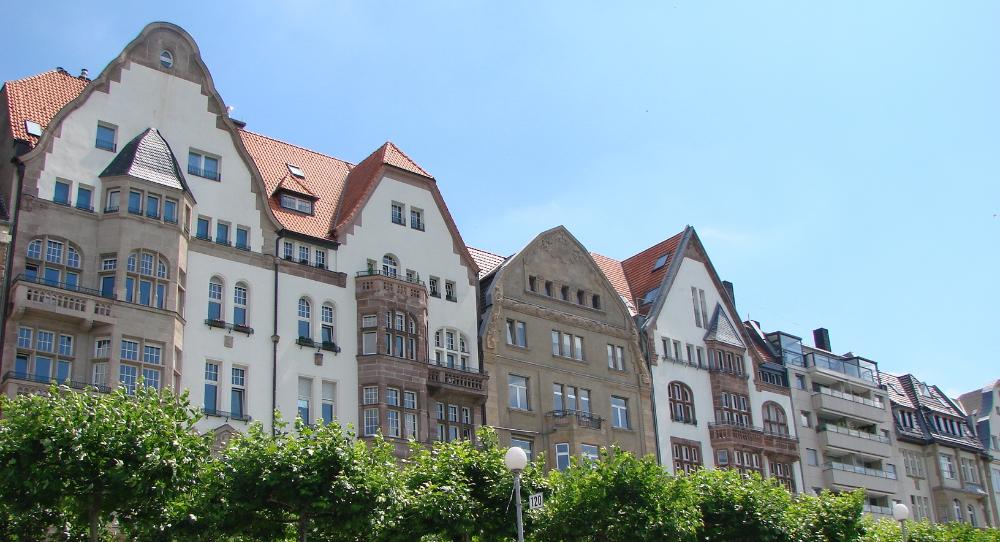
The city of Düsseldorf is a nice getaway from the bigger metropolis and offers a peaceful yet entertaining atmosphere in which to discover the city and its surroundings.
Located next to the Rhine river, the Old Town is relaxing to walk through, shop and eat in local restaurants, specially during the Summer.The city is full of life with terraces and venues offering a good array of options to eat, drink and go out.
Düsseldorf is also an important business area in Germany and it attracts a large number of meetings, conferences and exhibition centres, so it's no surprise to find plenty of accommodation on offer and for all budgets. When coming to Dusseldorf many travellers combine the visit with Cologne, by its proximity and also importance. At the same time there are many other pleasant pretty towns in the outskirts worth exploring from Düsseldorf, either by yourself or by tours.
Dusseldorf has an oceanic climate, and is among the warmest cities in Germany thanks to the strong breezes blowing in from the nearby North Sea and Atlantic Ocean. Average temperatures in the spring, summer and autumn are warm and pleasant, ranging from 15°C in May and October to around 25°C at summer's peak in July and August.
Winters are cold but not extreme, with average low temperatures around just over 0°C. Rain is fairly steady throughout the year, although the long days of summer offer more sunshine hours than winter.
The best time to visit Dusseldorf is between May and September, although visitors should avoid the high season in July and August, for hotter temperatures and more people everywhere making longer waiting times for tourism activities. Take sun protection if you are outside during this season, as the sun when its out, is strong in the Summer!
When arriving to Düsseldorf by plane, the simplest and cheapest option is to travel by train. The regional trains (S-Bahn S11) offers frequent services to the city centre. You can get the S11 from Terminal C, going underground. However if you wish to travel to other cities or travel quick, then you need to get the SkyTrain, a fully automatic cabin railway, which will take you straight to the main railway station where you can connect to both the S-Bahns (urban trains) and ICEs (intercity express trains).
Alternatively you can go by bus. The bus station is located in front of the main Arrivals hall. Alternatively you can go by bus. The bus station is located in front of the main Arrivals hall. Alternatively you can go by bus. The bus station is located in front of the main Arrivals hall. Scheduled buses which operate are:
- Bus 721 to/from Tannenhof/Gothaer Weg via Düsseldorf main railway station.
- Bus 760 to/from Ratingen and Düsseldorf-Wittlaer-Bockum, Rosspfad. Bus SB51 to/from Kaarst-Rathaus via Düsseldorf-Nordfriedhof, Meerbusch.
- Bus 896 Düsseldorf-Flughafen Terminals A/B/C shuttle to Düsseldorf-Messe (trade fair centre) (not all trade fairs)
Once in the city, there is an extensive public transport network, with trains running all over the state, the network comprises of the S-Bahn, RE and RB managed by the VRR. Whilst the city of Dusseldorf is managed by Rheinbahn with a network of metros (U-Bahn), Trams and buses..
Düsseldorf also offers to the tourist the Düsseldorf City Card, it grants you not only unlimited use of trams, U-Bahn and buses and all surcharge-free trains (RE, RB, S-Bahn, 2nd Class) within Zone A of the Düsseldorf City area (shaded in white on the pdf file), but also free or reduced-price entry to museums, various attractions and leisure facilities. For more information check the following link: Düsseldorf City Card.
However if you want to only use the transport and discover by yourself, there are tickets for occasional travellers. The EinzelTicket (Single Fare Ticket) or the Trip Ticket (4erTicket) which is valid for 4 trips. The price levels are divided in Short trip, A, B, C and D and the validity period increases from 20 minutes to 5 hours respectively. There are also day tickets and group/family tickets. Find out more about the transportation in Dusseldorf and the area from the official transport leaflet: Exploring Dusseldorf. Below you will find the maps of the public transport system ready to download.
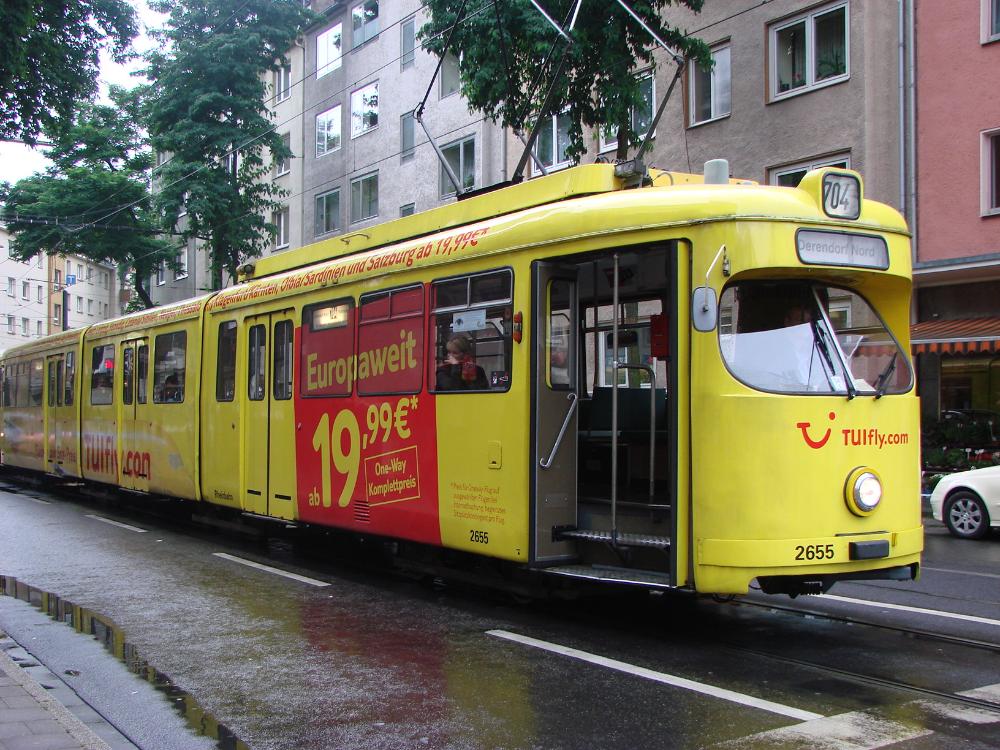
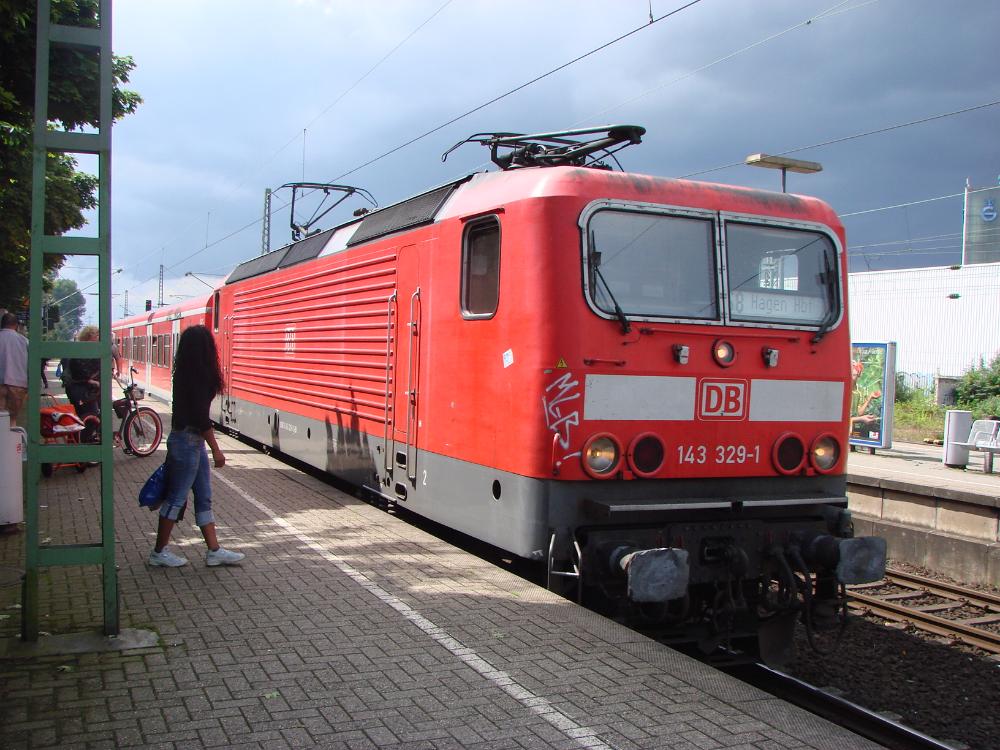
Düsseldorf is known for its fashion industry and art scene, as well it's historic Old town (Altstadt) together with the Rhine river it makes the city a very interesting place to stay and explore. The Rhine River, divides the city with its Altstadt (Old Town) on the east bank and modern commercial areas to the west. You will find important landmarks like Schloss Benrath and Schlossturm (Castle Tower) which dates to the 13th century. The city is also popular for shopping, streets such as Königsallee and Schadowstrasse are lined up with boutique shops. Every July the city hosts the Largest Fair on the Rhine, a massive week-long funfair attracting many tourists and locals alike, as well as the popular Karneval, which is held each November 11th with parades and colourful costumes.
There are plenty of things to see and do, below you will find the best suggestions:
- Altstadt, it's Düsseldorf's Old Town and it's the heart of the city where you should start your visit. The focal point of the Old Town is the Marktplatz where you'll find the imposing Town Hall (Rathaus) and a large equestrian statue of Elector John William II erected in 1711. Another highlight is the Castle Tower (Schlossturm) in Burgplatz on the banks of the Rhine. The only surviving section of this old castle that once dominated the city, the tower is home to the SchiffahrtsMuseum, one of Germany's best (and oldest) marine museums with fascinating exhibits on the history of shipbuilding and trade. After exploring the Old Town, you can visit the neighbouring Ehrenhof district. It's home to the domed Tonhalle, a concert hall constructed in 1926 as the base of the city's orchestra, Düsseldorfer Symphoniker.
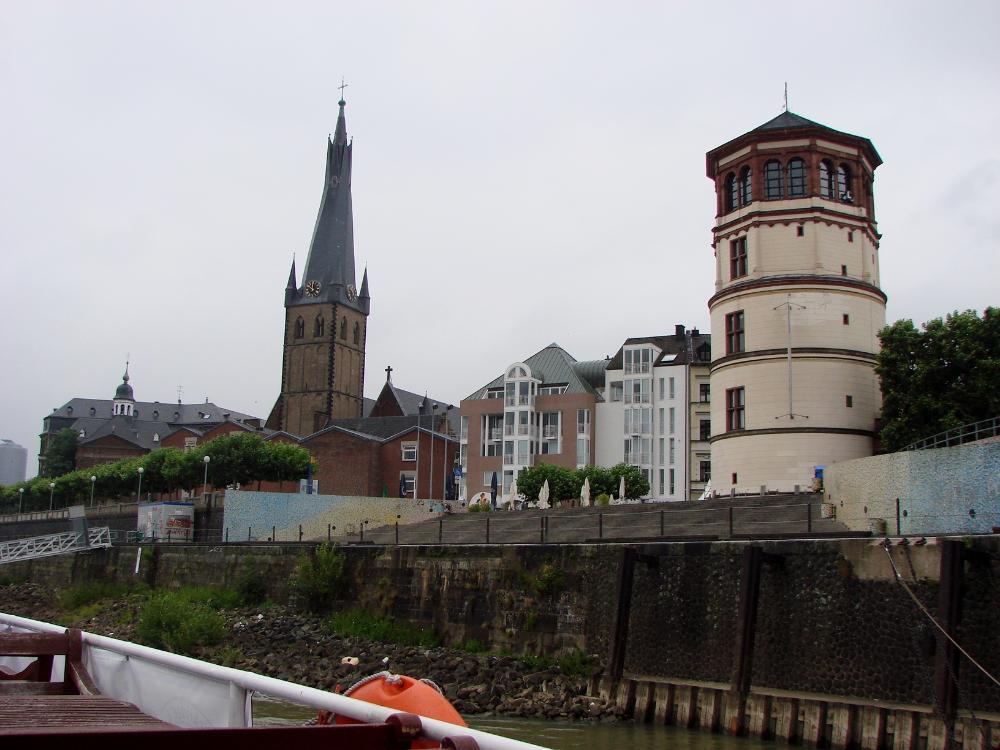
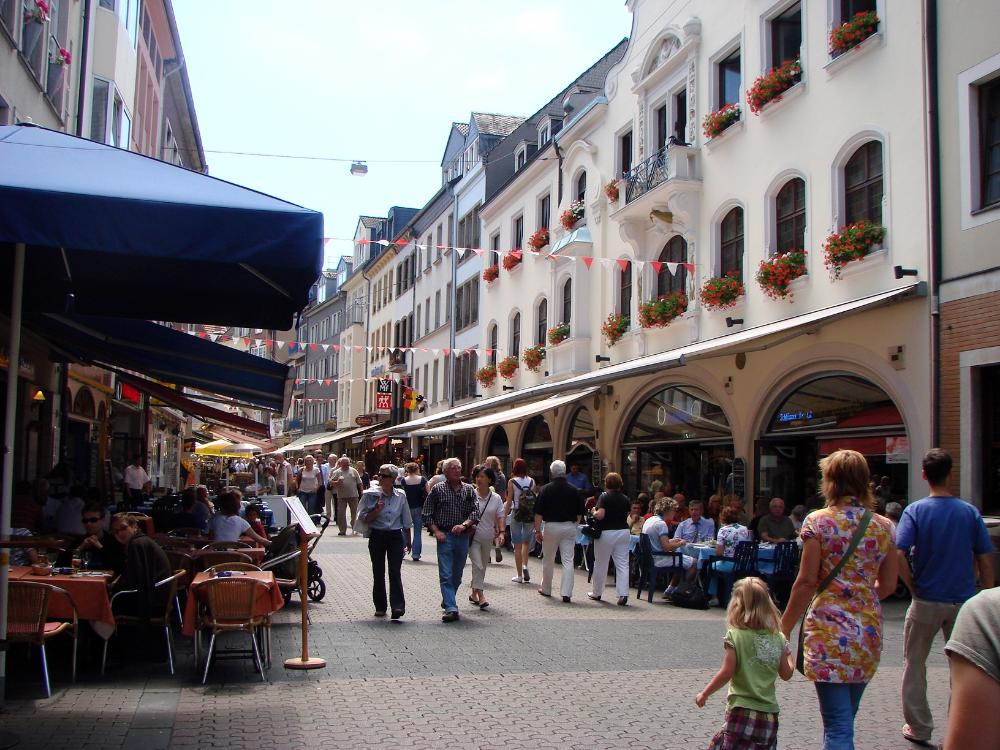
- Neue Zollhof and the Gehry Buildings, you will instantly recognise these buildings which stand out from the banks of the Rhine. Dusseldorf is home to some of the most daring of modern architecture, some examples are in Neue Zollhof, a redeveloped section of the city's old port. The highlights are the Frank Gehry designed office buildings of Media Harbor, three quite distinct structures built in 1998 that seem to defy gravity as they lean and curve like jelly frozen in mid-wobble. Another landmark is the nearby Rheinturm Tower, a 240-meter-tall telecommunications tower constructed in 1981 with an observation deck offering superb views of the city.
.jpg)
- Embankment promenade, seeing the city along this long promenade is one of the best ways of enjoying the city's wonderful riverside. Opened in 1997 as a means of hiding one of the city's busiest roads (buried beneath the promenade), this long pedestrian route gives the city a warm and welcoming feel specially when visiting during Spring and the Summer lined up by cafés, restaurants, galleries, and shops on one side. It also offers bike paths and countless opportunities for sightseeing by boat.
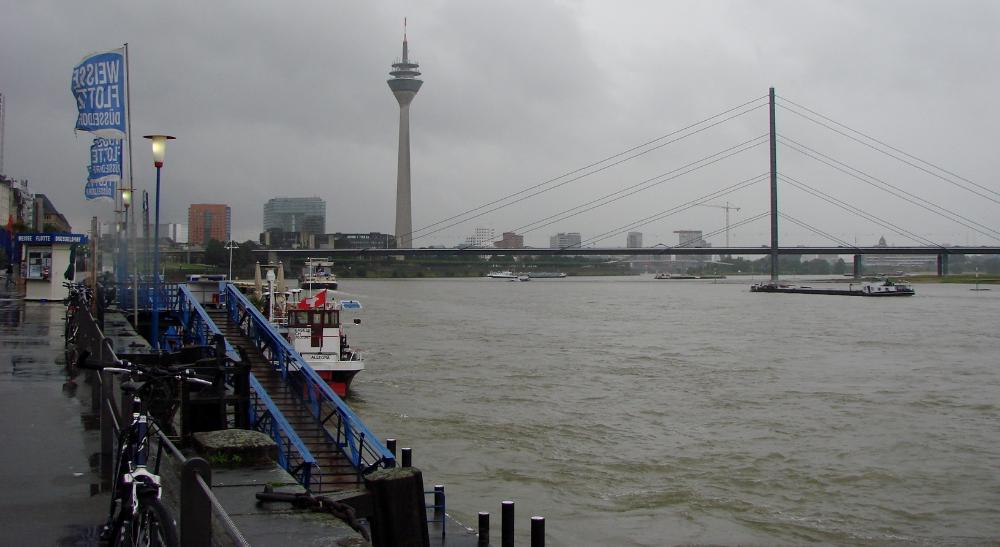
- Königsallee, Düsseldorf's most elegant shopping street, this long stretch of high-end real estate was laid out in 1802 and continues to draw the crowds with its eclectic mix of exclusive boutiques, luxury shopping arcades and art galleries, as well as numerous restaurants and cafés.
- Schloss Benrath, located ten-kilometers away from the city centre, Schloss Benrath is a splendid Baroque palace constructed between 1756 and 1773. Highlights include the palace's interior, as well as it's its huge park and gardens. The palace is home to three excellent museums focusing on various aspects of life in the 18th century: Museum Corps de Logis, showcasing the history of Benrath and its architecture. Museum for Landscape Art and the Natural Science Museum.
- Kaiserswerth, it's one of Düsseldorf's oldest neighborhoods. It's a wonderful place to explore due to its many old buildings and its picture-perfect location on the Rhine. Tracing its roots back to the 13th century is the Church of St. Suitbertus. But the highlight of Kaiserswerth is the Kaiserpfalz, the imperial stronghold of Emperor Frederick I, also known as Barbarossa. The site is mostly in ruins, but the scale is still impressive. To get there take the train to Klemensplatz station.
- Art Museums: As mentioned, Düsseldorf is a very artistic city, there are some very important museums for art lovers. The North Rhine-Westphalia Art Collection, which is actually spread across three locations in Düsseldorf. The largest collection, K20, is located in Grabbeplatz, an ultra-modern building with a façade of polished black granite, which is itself a work of art. K21, in the 19th-century Ständehaus building, includes a variety of installations focusing on modern painting and drawing. The third location, Schmela Haus, hosts numerous temporary exhibits. Then there is The Museum of Art(Museum Kunstpalast) with artwork dating from the 3rd century BC to the present day. Highlights include fine art, sculptures and drawings, in addition to more than 70,000 items of graphic art, photos, and applied art. This museum also offers theatrical performances and classical concerts, and guided tours are available. Also of interest to art lovers is Kunsthalle Dusseldorf, a collective of local artists who regularly host displays of members' work in a unique underground gallery called Art in the Tunnel (Kunst im Tunnel).Other art-related museums of note in Düsseldorf include the Julia Stoschek Collection, a private collection of contemporary art, and the Ernst Schneider Collection.
- Parks and gardens, Düsselfdorf also has some big extensive parks and beautiful gardens to walk around.Some of Düsseldorf's most popular parks are: Nordpark, it has numerous wide pathways which crisscross the park through its spacious lawns and themed gardens. You will also find the Japanese Garden. Hofgarten, a large park laid out in 1770 that stretches all the way from the Old Town and Königsallee to the banks of the River Rhine. The park is also home to a number of interesting modern sculptures as well as historic monuments and memorials, including the Märchenbrunnen with its fairytale figures, and a sculpture by Henry Moore.
Whilst you are in Düsseldorf it's worth visiting this fascinating town, renowned by it's upside down Monorail. The suspended monorail is a big attraction and also acts a magnificent window to the sights within the town. The town hosts a well equipped zoo, a wide-ranging programme of cultural events, beautiful parks and characteristic town districts and buildings. To get there you need to go by train, it will take 20 min by direct train or up to 50 min with changes. Get off at Wuppertal Hauptbahnhof.
There is a lot of nightlife in this touristic city, which comes alive at night with hundreds of pubs crowding its streets. Düsseldorf’s Altstadt has gained a reputation for being the ‘longest bar in the world’. The Old Town is a very lively place for a night out, and where most of the venues are located from traditional German bars to more modern cafes, cocktail lounges and sport bars.
The 'Kö' (short for Königsallee) will inevitably be the place for your shopping spree in the city. This handsome wide boulevard, decorated by an ornamental canal and fountains, hosts top designer shops such as Cartier, Lacoste, Gucci, Chanel, Hugo Boss, Joop and Prada.
Other areas, include the Altstadt for, individual shops and local specialities, such as the Mustard Museum and Shop, Berger Strasse 29, and the Gut & Gerne Schokolade chocolaterie and café at Burgplatz 3. There is a daily, high-quality food market on Carlsplatz with some mouth-watering gourmet items. Also head to Schadowstrasse, known as ‘Germany's shopping mile'.
For everyday items, there’s a large daily market on Carlsplatz, at the southern edge of the Altstadt. The Altstadt is also home to a popular Christmas market that sets up each December. For shopping centres , you will find the Kö-Galerie with around 100 shops, located at the "Kö". Stilwerk mall at Grünstraße 15 is a temple to modern interior design, while the striking Schadow Arkaden mall (nearby at Schadowstraße 11) is home to more designer outlets. Lastly the Düsseldorf Bilk Arcaden attract shoppers with 120 shops, restaurants and a swimming pool.
There are plenty of options available for all budgets when coming to Düsseldorf. It has the advantage of being much cheaper than Cologne, so many travellers can opt to stay in Dusseldorf and travel around. Take note that during busy times of the year, high season and when the city holds important events, accommodation in the city can get very expensive, so try to avoid those dates. As mentioned, Düsseldorf is an important business city so there are plenty of Hotels.
City centre is expensive, but with convenient public transport it's not hard to find something a little further away and still be in good reach of the city and the attractions. Rooms can start at €40 per night, but it's also worth checking for private accommodation or hostels if you're budget is tight.
Düsseldorf is relatively a small city which in itself can be seen in a day. However there is much more than meets the eye. When combining trips and other cities soon time will slip by. It's suggested to stay between 3 or 4 nights to see Düsseldorf as a whole and its surroundings.
Düsseldorf Photo Slide 📷
































.png)